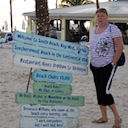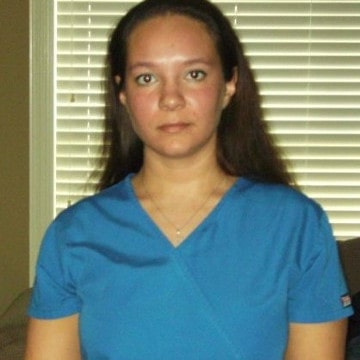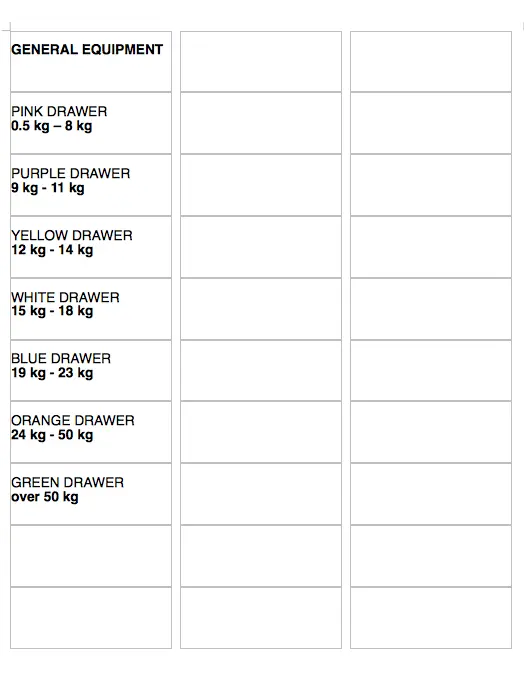Neonatal crash cart supply & equipment checklist / Broselow™
 Written by
Judy Haluka,
a cardiovascular invasive specialist and paramedic since the 1990s. She is certified as an instructor through the American Heart Association, the Health and Safety Institute, and the National Association of Emergency Medical Technicians.
Written by
Judy Haluka,
a cardiovascular invasive specialist and paramedic since the 1990s. She is certified as an instructor through the American Heart Association, the Health and Safety Institute, and the National Association of Emergency Medical Technicians.
Emergencies in a neonatal ICU can be nerve-wracking at best. Any time we are caring for our most precious babies and things go wrong, life gets instantly hectic. As healthcare providers, we need our supplies, our medications and our equipment at our fingertips. One of the best ways to make this happen is to organize the “crash carts” according to the Broselow™ Tape. The Broselow™ Tape is placed on the table and the child is placed next to the tape. Based on the length of the baby they will fall in a colored area which lists appropriate medication doses and equipment sizes. If the crash cart is organized correctly, the caregiver simply opens the drawer of the corresponding color and will find the appropriate sizes of equipment and medications. Organization of this type helps to save time and prevent mistakes. The following lists show complete content listing for Broselow™ ColorCode Carts. Compatible parts: PBL-PC-9, PBL-PC-9A.
General equipment
General equipment may be placed on the cart according to staff preference.
Airway equipment
- Laryngoscope handles (small, large)
- Laryngoscope bulbs (small, large)
- Batteries (size AA, size C)
- Miller blades (size 00, size 0, size 1)
- Wisconsin blades (size 2, size 3)
- Mac blades (size 2, size 3)
- McGill forceps
- Bag valve masks (neonate size, infant size)
- Manometer
- Bulb syringe
- Yankauer suction
- Dental suction
- White tape rolls (1-inch, 1/2-inch)
- Pediatric non-rebreather mask
- Basic face mask
- Nasal cannula
- Nipple adaptors (x2)
- Double oxygen outlet
- Respiratory nebulizer
- Capnography monitor
- Pulse oximeter
- Stethoscope
- Suction canister with tubing
- Portable suction machine
- Portable oxygen tank
- Oxygen masks (size 1, size 2, size 3, size 4, size 5, size 6)
- Peep valve
Medications
- Albumin 5%
- Adenosine (x2)
- Atropine
- Amiodarone
- Calcium chloride
- Dextrose 10% (x2)
- Dextrose 50%
- Epinephrine 1:1000
- Epinephrine 1:10000 (x2)
- Lidocaine 1%
- Naloxone (Narcan) 0.4 mg/ml
- Naloxone (Narcan) 1 mg/ml
- Sodium bicarbonate 4.2% (x3)
- Broselow™ tape
Vascular access equipment
- Central lines (3 Fr single lumen, 4 Fr dual lumen)
- Normal saline 1000 ml (x2)
- D5 and 1/2 NS 500ml
- Buretrol IV tubing (x2)
- Blood tubing
- Infant cutdown tray
- Umbilical catheter single lumen (3.5 Fr, 5.0 Fr)
- Tegaderm dressings (x5)
- IV labels (x5)
- Gauze 2 in x 2 in (x10)
- Skin prep (x5)
- Tourniquet
- E-Z intraosseous drill
- Intraosseous needle pediatric
- Intraosseous needle adult
- Intraosseous needle geriatric
Miscellaneous Equipment
- Sterile gloves (size 6 [x2 pr], size 7 [x2 pr], size 8 [x2 pr])
- Non sterile gloves (small [x1 bx], medium [x1 bx], large [x1 bx])
- Flashlight
- D batteries (x4)
- Defibrillator/monitor
- ECG electrodes (x2 pkgs)
- Sharps container
- Isolation gowns (x10)
- Mask with face shield (x4)
- Isolation masks (x1 bx)
- Pediatric defibrillation pads (x2 pks)
- Adult defibrillation pads (x2 pks)
- Documentation forms/clipboard
- Inventory sheet
You will notice that the Broselow™ type cart shown here has color coded drawers which match the results from the Broselow™ Tape measurement. This level of organization enhances response time and effectiveness by putting the correct size equipment at your fingertips, already sorted for the size infant or child that you attempting to resuscitate.
The following equipment recommendations are organized by the Broselow™ color chart to be appropriate for infants and children within hose size ranges.
Pink drawer (0.5 kg – 8 kg)
Vascular access
- IV start kit
- IV catheter (22 gauge [x2], 24 gauge [x2])
- Butterfly needle 23 gauge (x2)
- Intraosseous needle 18 gauge ped
- Extension set (x2)
- 3 way stopcock (x2)
- Normal saline flush (3 ml [x5], 10 ml [x5])
- Safety needles 1.5" (22 gauge [x2], 25 gauge [x2])
- Syringes (60 ml [x2], 20 ml [x2], 10 ml [x2], 3 ml [x2], 1 ml [x2])
- Heparinized syringe for blood gas draw
Airway equipment
- Endotracheal tubes — cuffed (2.0 mm, 2.5 mm, 3.0 mm, 4.0 mm)
- Stylet — small
- Suction catheters (6 Fr, 8 Fr)
- Nasogastric tube (6.5 Fr, 8.0 Fr)
- Surgilube®
- Syringe 35 ml
- LMA #1
- Nasal airway Rusch® (12 Fr, 14 Fr)
- Oral airway (50 mm #0, 60 mm #1)
Purple drawer (9 kg – 11 kg)
Vascular access
- IV start kit
- IV catheter (22 gauge [x2], 24 gauge [x2])
- Butterfly needle 23 gauge (x2)
- Intraosseous needle 18 gauge ped
- Extension set (x2)
- 3 way stopcock (x2)
- Normal saline flush (3 ml [x5], 10 ml [x5])
- Safety needles 1.5" (22 gauge [x2], 25 gauge [x2])
- Syringes (60 ml [x2], 20 ml [x2], 10 ml [x2], 3 ml [x2], 1 ml [x2])
- Heparinized syringe for blood gas draw
Airway equipment
- Endotracheal tubes — cuffed (3.5 mm, 4.0 mm)
- Stylet — small
- Suction catheters (8 Fr, 10 Fr)
- Nasogastric tube (8 Fr, 10 Fr)
- Surgilube®
- Syringe 35 ml
- LMA #1.5
- Nasal airway Rusch® (16 Fr, 18 Fr)
- Oral airway (60 mm #1)
Yellow Drawer (12 kg – 14 kg)
Vascular access
- IV start kit
- IV catheter (20 gauge [x2], 22 gauge [x2])
- Butterfly needle 23 gauge (x2)
- Intraosseous needle 18 gauge ped
- Extension set (x2)
- 3 way stopcock (x2)
- Normal saline flush (3 ml [x5], 10 ml [x5])
- Safety needles 1.5" (22 gauge [x2], 25 gauge [x2])
- Syringes (60 ml [x2], 20 ml [x2], 10 ml [x2], 3 ml [x2], 1 ml [x2])
- Heparinized syringe for blood gas draw
Airway equipment
- Endotracheal tubes — cuffed (4.0 mm, 4.5 mm)
- Stylet — small
- Suction catheters (10 Fr)
- Nasogastric tube (10 Fr)
- Surgilube®
- Syringe 35 ml
- LMA #2.0
- Nasal airway Rusch® (18 Fr, 20 Fr)
- Oral airway (60 mm #2)
White Drawer (15 kg – 18 kg)
Vascular access
- IV start kit
- IV catheter (18 gauge [x2], 20 gauge [x2], 22 gauge [x2])
- Butterfly needle 23 gauge (x2)
- Intraosseous needle 18 gauge ped
- Extension set (x2)
- 3 way stopcock (x2)
- Normal saline flush (3 ml [x5], 10 ml [x5])
- Safety needles 1.5" (22 gauge [x2], 25 gauge [x2])
- Syringes (60 ml [x2], 20 ml [x2], 10 ml [x2], 3 ml [x2], 1 ml [x2])
- Heparinized syringe for blood gas draw
Airway equipment
- Endotracheal tubes — cuffed (4.5 mm, 5.0 mm)
- Stylet — small
- Suction catheters (10 Fr, 12 Fr)
- Nasogastric tube (10 Fr)
- Surgilube®
- Syringe 35 ml
- LMA #2.5
- Nasal airway Rusch® (18 Fr, 20 Fr)
- Oral airway (70 mm #2)
Blue Drawer (19 kg – 23 kg)
Vascular access
- IV start kit
- IV catheter (18 gauge [x2], 20 gauge [x2])
- Butterfly needle 23 gauge (x2)
- Intraosseous needle 18 gauge ped
- Extension set (x2)
- 3 way stopcock (x2)
- Normal saline flush (3 ml [x5], 10 ml [x5])
- Safety needles 1.5" (22 gauge [x2], 25 gauge [x2])
- Syringes (60 ml [x2], 20 ml [x2], 10 ml [x2], 3 ml [x2], 1 ml [x2])
- Heparinized syringe for blood gas draw
Airway equipment
- Endotracheal tubes — cuffed (5.0 mm, 5.5 mm)
- Stylet — medium
- Suction catheters (10 Fr, 12 Fr)
- Nasogastric tube (12 Fr)
- Surgilube®
- Syringe 60 ml catheter tip
- LMA #3.0
- Nasal airway Rusch® (22 Fr, 24 Fr)
- Oral airway (70 mm #2, 80 mm #3)
Orange drawer (24 kg – 50 kg)
Vascular access
- IV start kit
- IV catheter (18 gauge [x2], 20 gauge [x2])
- Butterfly needle 23 gauge (x2)
- Intraosseous needle 18 gauge
- Extension set (x2)
- 3 way stopcock (x2)
- Normal saline flush (3 ml [x5], 10 ml [x5])
- Safety needles 1.5" (22 gauge [x2], 25 gauge [x2])
- Syringes (60 ml [x2], 20 ml [x2], 10 ml [x2], 3 ml [x2], 1 ml [x2])
- Heparinized syringe for blood gas draw
Airway equipment
- Endotracheal tubes — cuffed (5.5 mm, 6.0 mm)
- Stylet — medium
- Suction catheters (12 Fr, 14 Fr)
- Nasogastric tube (14 Fr)
- Surgilube®
- Syringe 60 ml catheter tip
- LMA #3.5
- Nasal airway Rusch® (26 Fr, 28 Fr)
- Oral airway (70 mm #2, 80 mm #3)
Green Drawer (over 50 kg)
Vascular access
- IV start kit
- IV catheter (14 gauge [x2], 16 gauge [x2], 18 gauge [x2])
- Butterfly needle 23 gauge (x2)
- Intraosseous needle 18 gauge
- Extension set (x2)
- 3 way stopcock (x2)
- Normal saline flush (3 ml [x5], 10 ml [x5])
- Safety needles 1.5" (22 gauge [x2], 25 gauge [x2])
- Syringes (60 ml [x2], 20 ml [x2], 10 ml [x2], 3 ml [x2], 1 ml [x2])
- Heparinized syringe for blood gas draw
Airway equipment
- Endotracheal tubes — cuffed (7.0 mm, 8.0 mm)
- Stylet — large
- Suction catheters (12 Fr, 14 Fr)
- Nasogastric tube (16 Fr)
- Surgilube®
- Syringe 60 ml catheter tip
- LMA #4
- Nasal airway Rusch® (30 Fr, 32 Fr)
- Oral airway (90 mm #4, 100 mm #5)
Note about color blindness: Color blindness affects a significant number of people, especially white men (approx. 10% in USA). To increase accessibility of the Broselow™ color-coded crash cart, we recommend explicitly labeling each drawer in high-contrast black-ink labels. We have created a set of shelf labels (standard Avery 5160) that can be downloaded here. For JCAHO, please cover the stickers with clear plastic tape!
Maintenance of crash cart
The worst thing ever is to reach for a piece of emergency equipment or an emergency medication and find it inoperable or expired. It is important that the crash cart be checked regularly and maintained so that its contents are there when needed.
The following is a maintenance routine that should be completed at least monthly:
- Expiration dates on medications should be checked on the first day of the month
- Expired medications should be promptly removed and replaced
- Batteries should be checked and battery-operated equipment should be checked for corrosion
Additional resources
- Study comparing color coded pediatric cart vs standard cart -- https://pubmed.ncbi.nlm.nih.gov/16061568/
- The history of the Broselow™ Tape -- https://epmonthly.com/article/from-humble-beginnings-the-birth-of-the-broselow-tape/
- Standard vs Broselow™ coded cart and pediatric outcomes -- https://publications.aap.org/pediatrics/article-abstract/116/3/e326/68386/Comparing-the-Utility-of-a-Standard-Pediatric?redirectedFrom=PDF?autologincheck=redirected
Retail suppliers
Cardinal health™
Provides all drugs listed here. Minimum account expenditure is $50,000 per month to create an account. (If your practice is part of a hospital network, they may already have an account.)
Boundtree medical
Every equipment and drug item listed here is available from Boundtree with no account minimums.
Mention ACLS Training Center for 10% off your first order.
Frequent questions
-
Is there a special backboard needed for the peds/neonatal crash cart?
IT depends upon the policy of your facility. But if you are going to utilize a backboard for pediatrics be sure to have padding of some type available to pad under the torso so that the head does not end up flexed and the airway obstructed.
-
Hello, I was wondering if you could provide me a list of the up to date current medication list for neonatal crash carts. I was given a have a list of:
- dextrose 10% injection 250ml IV bag
- epinephrine injection 1mg/10ml syringe
- sodium chloride 0.9% inj 250 ml IV bag
- sodium chloride 0.9% injection 10 ml syringe
- sodium chloride 0.9% injection 10ml vial
and I would need evidence to support this. Thank you for your time, Leanna
There is no standard list. It is defined by the policies of your institution.
-
Hi, I had some questions about your neonatal crash cart supply & equipment checklist/Broselow page. What is the latest version of the pediatric Broselow Tape?
2019.
-
Do you have supply lists for a normal adult crash cart?
Yes! Please see this page.
-
Do you have any more information for pediatrics?
We offer a full PALS course, please see this page for more information.
Please email us at support@ACLS.net and we will be happy to answer any other questions you have. Please share this page on a medical forum you use, this means a lot to us.

Written by Judy Haluka, a cardiovascular invasive specialist and paramedic since the 1990s. She is certified as an instructor through the American Heart Association, the Health and Safety Institute, and the National Association of Emergency Medical Technicians.
More by this author:

Reviewed by Amanda Menard, LPN, a practical nurse since 2005 with experience in ICU, cardiac care, and case management. She is pursuing her MSN for Family Nurse Practitioner and is a former Military Medic with the Louisiana National Guard.
More by this author:
